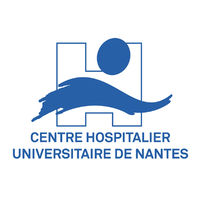预约演示
更新于:2025-05-07
Thyroid Nodule
甲状腺结节
更新于:2025-05-07
基本信息
别名 Nodule of Thyroid、Nodule of Thyroid Gland、Nodule of the Thyroid + [18] |
简介 A small circumscribed mass in the THYROID GLAND that can be of neoplastic growth or non-neoplastic abnormality. It lacks a well-defined capsule or glandular architecture. Thyroid nodules are often benign but can be malignant. The growth of nodules can lead to a multinodular goiter (GOITER, NODULAR). |
关联
3
项与 甲状腺结节 相关的药物靶点 |
作用机制 THR激动剂 |
原研机构 |
最高研发阶段批准上市 |
首次获批国家/地区 美国 |
首次获批日期1956-05-08 |
靶点- |
作用机制- |
非在研适应症- |
最高研发阶段临床3期 |
首次获批国家/地区- |
首次获批日期1800-01-20 |
靶点- |
作用机制- |
在研适应症 |
非在研适应症- |
最高研发阶段临床前 |
首次获批国家/地区- |
首次获批日期1800-01-20 |
319
项与 甲状腺结节 相关的临床试验ChiCTR2500101444
Diagnostic value of ACR TI-RADS stratification system combined with BRAF V600E gene in thyroid Bethesda category III nodules
开始日期2025-04-25 |
申办/合作机构- |
NCT06220656
ThyRoid Active Monitoring and Intervention Longitudinal (TRAIL) Study: Feasibility and Pilot
This is a pilot study to compare two ways of managing newly identified thyroid nodules that are likely to be cancerous based on ultrasound result and which under usual care would undergo immediate biopsy.
The main goals of this pilot study are 1) compare anxiety at 6 months in each treatment arm using the validated instrument Anxiety-CA, 2) measure thyroid quality of life in each treatment arm
Participants will be randomized to one of two groups:
1. immediate biopsy (usual care)
2. Active monitoring (serial ultrasound based monitoring and close clinical follow-up)
The main goals of this pilot study are 1) compare anxiety at 6 months in each treatment arm using the validated instrument Anxiety-CA, 2) measure thyroid quality of life in each treatment arm
Participants will be randomized to one of two groups:
1. immediate biopsy (usual care)
2. Active monitoring (serial ultrasound based monitoring and close clinical follow-up)
开始日期2025-04-01 |
申办/合作机构 |
NCT06868459
Pressure-enabled Retrograde Occlusive Therapy with Embolization for Control of Thyroid Disease (PROTECT Registry): a Multicenter Registry
Multi-center registry study to evaluate disease-related quality of life outcomes of thyroid embolization via pressure-enabled delivery (PED-TAE). Additional technical success data on parenchymal volume reduction, thyroid function tests changes and post-procedural complications will be recorded. Data will be collected for patients who have undergone PED-TAE using the TriNav Infusion System at participating sites. The registry study will include up to 10 sites, with Sarasota Memorial Health Care System acting as the lead site responsible for maintaining and monitoring the study database.
开始日期2025-04-01 |
申办/合作机构 |
100 项与 甲状腺结节 相关的临床结果
登录后查看更多信息
100 项与 甲状腺结节 相关的转化医学
登录后查看更多信息
0 项与 甲状腺结节 相关的专利(医药)
登录后查看更多信息
13,593
项与 甲状腺结节 相关的文献(医药)2025-12-31·International Journal of Hyperthermia
Thyroid nodule rupture after thermal ablation for benign thyroid nodules: incidence, risk factors, and clinical management
Article
作者: Peng, Li-Li ; Wei, Ying ; Li, Yan ; Yu, Na ; Wu, Jie ; Cao, Shi-Liang ; Yu, Ming-an ; Liu, Yu-tong ; Zhao, Zhen-Long
2025-12-31·International Journal of Hyperthermia
Clinical study on the relationship between the incidence of complications and tumour size after thermal ablation of benign thyroid nodules
Article
作者: Wu, Jie ; Peng, Li-li ; Wei, Ying ; Cao, Shi-liang ; Li, Yan ; Yu, Ming-an ; Zhao, Han-xiao ; Yu, Na ; Zhao, Zhen-long
2025-12-01·Endocrine Pathology
Subclassifying "Atypia of Undetermined Significance (AUS)" Category in the 2023 Bethesda System for Thyroid Cytopathology: Analyzing K-TIRADS, BRAF V600E Mutation, and Risk of Malignancy
Article
作者: Hyeon, Jiyeon ; Cho, Chulshin ; Lee, Seung Eun ; Bang, Heejin ; Kim, Mi Young
92
项与 甲状腺结节 相关的新闻(医药)2025-04-14
Pulsed field ablation (
PFA
) is one of the hottest areas of medtech, and nanosecond pulsed field ablation (nsPFA) is an approach with potential to advance this nonthermal, minimally invasive therapy for atrial fibrillation (AFib) and beyond.
PFA catheters generate an energy field inside a patient’s pulmonary vein to block erratic heart signals by killing cardiomyocytes while sparing nearby nerves from damage.
While PFA energy is delivered in short pulses lasting in microseconds (a microsecond is one-millionth of a second), nsPFA uses pulses measured in nanoseconds (one-billionth of a second).
“PFA is unique, PFA is disruptive, and nsPFA looks like a shining star within that field,” said Pulse Biosciences Co-chair and CEO Paul LaViolette.
Pulse Biosciences is developing nsPFA technology not only for cardiac ablation to treat AFib, but also to ablate benign thyroid nodules.
Nanosecond PFA has “extraordinarily potent therapeutic potential. … It is a very unique energy form that manifests in very unique clinical deliverables,” said LaViolette, who is also chief operating officer and managing partner at SV Health Investors, a board member for medtech OEMs including Edwards Lifesciences, and a former Boston Scientific chief operating officer and president of its cardiology and endosurgery businesses.
In an interview with Medical Design & Outsourcing, LaViolette and Pulse Biosciences co-founder and Chief Technology Officer Darrin Uecker discussed their company’s technology and how it compares to PFA.
“In general, nanosecond pulsed field ablation is the utilization of pulses whose duration is less than a microsecond and greater than or equal to one nanosecond,” Uecker said. ” … About 30 years ago, an engineer and a biologist got together at Old Dominion University and began to use these much shorter duration pulses and typically much higher amplitude pulses to affect cells. This company was really founded on that foundational, unique pulse duration/pulse amplitude technology and its application in biology.”
Pulse Biosciences says nsPFA offers faster, deeper ablations with less potential for side effects like muscle stimulation, nerve capture and heat generation.
PFA is considered a nonthermal therapy because it kills cells by opening holes in their walls with the energy field in a process called electroporation, rather than heating the cells with radiofrequency ablation or freezing them with cryoablation. But PFA technology can cause heat and complications like strokes.
“All of these pulsed field technologies are using electrical energy to impact tissue and fundamentally impact cells,” Uecker said. “That energy is converted into heat almost no matter what. So on the microsecond side — depending on the design of the catheter and the unique pulse waveforms that they use — you need to really look at what is the energy that’s being deposited into that tissue over what volume of tissue to get a sense for if there is going to be a thermal increase that could pose a risk in terms of thermal damage.”
Related: How Abbott dialed in the waveform for its Volt PFA system
“With nanosecond pulsing, the pulse duration itself is typically an order of magnitude shorter in duration than what you see on the microsecond side,” he later continued. “And that’s an order of magnitude less energy, fundamentally, that’s being deposited. Now you also have to take into account the amplitude of the pulse. And importantly, you have to really take into account the design of the catheter and how it matches up with the use of those pulse technologies. We think that fundamentally, the nanosecond pulsation is one of the benefits, is this ability to have a very low power system.”
The Pulse Biosciences nsPFA platform
Pulse Biosciences has FDA 510(k) clearances for
dermatological ablation and resurfacing
with its CellFX System and soft tissue
ablation
with its CellFX nsPFA Percutaneous Electrode System.
The company has FDA Breakthrough Device Designation for its CellFX nsPFA Cardiac Surgery System, which uses a bipolar surgical clamp designed for fast, easy ablation during open surgery. That system is enrolled in the FDA’s Total Product Life Cycle (TPLC) Advisory Program.
The company has also developed the CellFX nsPFA 360° cardiac ablation catheter for minimally invasive pulmonary vein ablation and wants to use the CellFX nsPFA Percutaneous Electrode for treating benign thyroid nodules.
These investigative systems are powered by the company’s tunable nanosecond pulse generator, which can generate varying numbers of pulses and pulse durations, amplitudes and frequencies. Pulse Biosciences sees a $6 billion cardiac and thyroid market in the U.S. for nsPFA and more than $16 billion opportunity globally.
Pulse Biosciences plans to start a U.S. clinical trial for benign thyroid nodule ablation, along with pivotal trials for its CellFX nsPFA Cardiac Surgery System and CellFX nsPFA 360° cardiac catheter — all in mid-2025.
“Regardless of the magnificence of the technology, no technology really does sell itself,” LaViolette said. “We have to prove our clinical benefit, our health economic benefit, we have to improve workflow and process flow for clinicians and for healthcare providers. And then we have to compete and we have to demonstrate our value proposition. … The phase the company is moving into is a little bit less about technology — for which we have great, heralded results — and now more about the commercial side of the business and the continuous development of clinical evidence.”
“We recognize, and our team here recognizes the opportunity that we have with nsPFA,” he later continued. ” … Amongst the entire array of great, innovative work going on in medtech, I think we’re onto something really special here.”
First Look: Boston Scientific’s next-gen Faraflex PFA and mapping catheter
2025-03-13
·赛柏蓝
润伊容口服液-消痤祛斑标本兼治
1、全国独家傣药产品
润伊容口服液为古老傣药智慧结晶,为全国独家产品,用于风热上逆所致的痤疮、黄褐斑。可调节身体大循环和皮肤微循环,滋养气血改善内分泌,消除色素沉淀,为女性美容养颜传世好药。
2、颜值经济崛起拥有广阔市场
皮肤问题的高发性。痤疮(青春痘)和黄褐斑是两大高发皮肤问题,覆盖人群广泛(青少年至中年女性),且易于反复发作,形成长期需求。消费者对安全、天然、副作用小的解决方案需求迫切,润伊容傣药“草本天然”的定位可精准切入这一痛点。
颜值经济的崛起,社交媒体和网红文化加剧了对外貌的重视,推动护肤市场快速增长,祛痘、淡斑细分领域增长显著。
3、适用人群广泛
功能主治:疏风清热,解毒消痤。用于风热上逆所致的痤疮、黄褐斑。
使用科室:皮肤科
治疗疾病:针对青春期及青年时期,由于环境影响内分泌,造成的皮肤痤疮、以及中青年女性黄褐斑,具有良好的调节内分泌、抗炎作用。
4、多本工具书收录治疗痤疮、黄褐斑
2009版《常见妇科病自我药疗与调理》
2010版《皮肤科常用药物手册》
2019版《新编中西皮肤药物手册》
5、傣药良方、效果显著
独特的傣医理论精准组方,清热解毒,消肿散结,又可以祛风止痒、达到标本兼治的效果,治疗痤疮、黄褐斑疗效确切,产品特点突出。
现代药理研究证明,润伊容口服液能调节内分泌、抗菌消炎、消肿止痛,抑制皮脂炎性反应,可促进皮肤组织内毒素排出,促进疮口愈合。
按摩软膏-止痛更治痛,一抹就轻松
1、独家产品,OTC乙类 ,市场认可度高
按摩软膏由芸香浸膏、颠茄流浸膏、乳香、没药、乌药、川芎、郁金、水杨酸甲酯、薄荷油、肉桂油、丁香油、樟脑共计12味经典中药组成,被广大运动爱好者、白领人群、中老年人推崇,专注缓解软组织酸胀肿痛,口碑极佳。OTC乙类更加方便消费者自主诊疗购药,为第23届奥运会中国代表团指定用药。
2、市场规模大,销售潜力突出
目前,中国每周参与两次以上健身活动的人士达到 3.03 亿人,因运动不当引发的软组织损伤,肌肉酸痛等普遍存在;另65岁以上老年人占比逐年增加,2020年达到2亿,关节疼痛、腰背痛潜在人群持续扩容;都市白领久坐办公,受颈肩痛,腰椎痛持续困扰。
3、治疗范围广泛
功能主治:活血化瘀、和络止痛。用于运动劳损、肌肉酸痛、跌打扭伤。
适用科室:运动外科,骨伤科,康复科,疼痛科。
其他终端:药店,健身房,电商终端。
治疗疾病:运动损伤,肌肉酸痛,跌打扭伤。
4、二项国家发明专利,技术领先
一种活血化瘀、和络止痛的凉性按摩软膏及其制备方法
一种活血化瘀、和络止痛的热性按摩软膏及其制备方法
5、中药良方、疗效显著、使用方便
中药萃取提纯,水包油技术、易吸收,不油腻无污染,使用方便,全方温寒并用,气血并调具有活血化瘀、消肿止痛的功效,使气血通畅 ,肿痛消除,治标更治本。
现代药理表明,使用按摩软膏后,能明显改善局部血液循环,促进疼痛症状缓解,明显增加软组织损伤的治愈率。
消结安口服液-傣药消结显神威
1、全国独家产品,市场认可度高
消结安是全国销售额最高的傣族单品药物之一,销售额过亿元。市场认可度高,被临床乳腺外科、妇科医生广泛使用,在临床应用中效果突出,有非常高的临床口碑。
2、市场规模大,销售潜力突出
现代社会,生活及工作压力大,人长期处于高压环境、情绪压抑,不良情绪致肝气郁结,影响肝经气血运行,致使痰瘀积聚形成结节或肌瘤等。尤其是女性人群,易出现乳腺增生、甲状腺结节、子宫肌瘤和卵巢囊肿等,而这些看似不同部位的问题,实则相互关联。
流行病学研究显示,中国成年女性90%以上都患有乳腺增生,卵巢囊肿发病率在13%~23.9%,子宫肌瘤发病率在20%~30%。
3、治疗疾病范围广泛
功能主治:活血化瘀,软坚散结。用于气滞血瘀所致乳癖,乳腺小叶增生,卵巢囊肿,子宫肌瘤见上述证候者。
适用科室:甲乳外科、妇科等
治疗疾病:乳腺增生、卵巢囊肿、子宫肌瘤。
4、国家临床指南推荐使用
2021年《中成药临床应用指南·妇科疾病分册》推荐治疗子宫肌瘤。
2024年,全国多家三甲级医院参与的随机、双盲,多中心临床试验证明,治疗子宫肌瘤(气滞血瘀夹湿热证),服用消结安3个月后,子宫肌瘤缩小25.97%,明显优于安慰剂组(安慰剂组增大1.31%),且未发现不良反应,疗效显著。
5、傣药良方、疗效显著
独特的傣医清热解毒理论精准组方,活血化瘀、软坚散结,同时清热解毒、疏肝解郁,明确治疗女性三联征(乳腺增生、子宫肌瘤、卵巢囊肿),特别治疗周期性乳痛症效果突出,多重治疗机理适用中医多种证型,方便临床处方。
现代药理研究证明,单独使用消结安,调节内分泌作用疗效确切,与类固醇激素合用,增效作用明显。
四物合剂-源自千年妇科第一方“四物汤”
1、千年妇科第一方
四物合剂源自唐朝蔺道人《仙授理伤续断秘方》中的“千年妇科第一方”【四物汤】,后载于宋代《太平惠民和剂局方》,有养血调经之效,是治疗营血亏虚,血行不畅的经典方剂,多则冗余、少则不足,药少而精,药专力宏。四物合剂是四物汤的现代剂型。
2、市场规模大,销售潜力突出
妇科内分泌相关疾病连年上升,市场需求持续扩大。据《2024年女性健康白皮书》统计,90%成年女性存在卵巢健康问题,30%年轻白领会遭遇卵巢早衰,且以每年100万的基数快速增长。
四物合剂传承千年妇科第一方,养血调经,调节内分泌,有效解决女性卵巢早衰及月经不调等内分泌问题,保护生育功能,守护女性健康。
3、治疗疾病种类多,适用人群广泛
功能主治:养血调经。用于血虚所致的面色萎黄、头晕眼花、心悸气短及月经不调。
治疗疾病:轻度或慢性贫血,月经不调、异常子宫出血、卵巢早衰、闭经、月经过多或过少、多囊卵巢综合征、痛经等多种妇科疾病。
适用人群:抗衰、血虚、月经不调、以及日常具有美容养颜需求的人群。
4、多部国家临床指南推荐使用,证据充分
5、中医药治疗女性内分泌疾病优势明显
西医治疗女性内分泌疾病主要以激素治疗为主,但存在效果不甚理想、诸多禁忌证限制以及长时间应用引起的安全性问题。中医药优势明显,大量的临床研究表明,中西医结合治疗女性内分泌疾病,在恢复月经周期、改善临床症状、提高生活质量、减少西药不良反应等方面效果显著。
健阳片-治疗、阳痿早泄等性功能低下症的基础用药
1、“补通调”结合,标本兼治
健阳片补肾益精,助阳兴萎。用于肾虚阳衰引起的阳萎、早泄等性功能低下症。补肾阳强筋骨,补气固精,治疗勃起功能障碍、早泄疗效确切。
2、市场规模大,销售需求旺盛
国内流行病学调查显示勃起功能障碍总患病率为26.1%,其中40岁以上的男性患病率约为40%。早泄的文献报道患病率通常在20%-30%之间。病因可分为器质性、心理性和混合性,随着现代社会工作生活压力加大,发病率持续上升。
3、治疗疾病明确,应用人群广泛
功能主治:补肾益精,助阳兴萎。用于肾虚阳衰引起的阳萎、早泄等性功能低下症。
治疗疾病:阳萎、早泄、阳萎早泄共病等性功能低下症。
适用人群:性功能低下人群,以及劳累压力大、性过度透支、体虚等需提升性功能的人群。
4、国家临床指南推荐使用,证据充分
《勃起功能障碍中西医结合多学科诊疗指南(2022版)》
《早泄中西医结合多学科诊疗指南(2021版)》
5、中医药治疗男性性功能疾病优势明显
男性勃起功能障碍、早泄需要精准诊疗,化药具有诸多禁忌证限制以及长时间应用引起的安全性问题,随着中西医结合领域的不断深入,中医药治疗方法的融入可极大提高对患者个体化治疗的把握,从而达到更好的疾病治疗有效率。中成药为治疗该类疾病的基础用药,标本兼治,为更多患者优选。
神威药业战略合作联系人
牛经理:0311-88030077
神威药业招商登记入口
神威药业为合作方提供全方位的支持
品牌支持:神威药业为中国医药百强企业,市场知名度高,神威产品以质量可靠,安全,有效,深受医生和患者信赖。
市场推广支持:提供专业的市场推广方案和宣传物料。
学术支持:产品临床专家指南、共识推荐,线上线下学术活动,促进产品销售。
市场渠道管理:严格管理市场,渠道有序,保护广大代理商利益。
配送商网络支持:完善的产品配送商体系,确保货物及时配送终端,减缓代理商回款资金压力。
售后服务支持:售后快速响应机制,解决代理商后顾之忧。
神威药业集团简介
神威药业集团是以现代中药为主业的大型综合性企业集团,全国医药百强企业,香港主板上市公司。主营业务涵盖中药材种植、中药制剂、中药配方颗粒、中药饮片、生物制药、神威大药房连锁、神威中医堂、互联网医疗等上中下游产业链。
集团具有强大的科技研发实力,拥有国家认定企业技术中心、国家地方联合重点实验室、院士工作站、博士后科研工作站,通过国际CNAS认可的国家实验室等众多科研平台,并多次荣获河北省质量管理奖。
神威药业“中药注射剂全面质量控制及在清开灵、舒血宁、参麦注射液中的应用项目”,“益气活血法治疗糖尿病肾病显性蛋白尿的临床与基础研究”二次荣获“国家科技进步二等奖”。神威药业产品400余个, 涵盖17个治疗领域,具有独家自主知识产权产品30余个,产品优势明显,众多基药、独家、医保产品形成了心脑血管、骨科、呼吸,消化,妇儿,增强免疫抗肿瘤六大优势产品线,拥有现代中药注射液、现代中药软胶囊、现代中药颗粒剂、中药配方颗粒四大特色剂型。
声明:此篇文章受众仅为医药、医疗等健康产业专业伙伴,仅供医学药学专业人士参考使用,不能替代医嘱,不针对普通消费大众。
2025-03-06
点击“蓝字”关注我们
去年,司美格鲁肽减重版获我国国家药品监督管理局批准上市后,迅速成为成年原发性肥胖症患者减重治疗的新途径,在医疗领域以及有减重需求的群体里激起了广泛讨论。作为创新型减重药物,该药的适用范围、使用方式、特殊人群用药以及相关注意事项,都引发了大众的高度关注,疑问也随之而来。鉴于此,本刊特邀辽宁中医药大学附属医院的高天舒教授,就司美格鲁肽减重版的正确使用方法进行专业解读,为大家答疑解惑。
专家简介
高天舒 教授
辽宁中医药大学附属医院
(上下滑动可查看)
辽宁中医药大学附属医院 内分泌科主任
沈阳市内分泌代谢疾病临床研究中心主任
教授 博士、博士后导师,
中国中西医结合学会内分泌分会副主任委员兼甲状腺学组组长
辽宁省中医药学会内分泌分会及态靶辨治分会主任委员
辽宁省中西医结合学会内分泌分会及糖尿病分会主任委员
中国民族医药学会内分泌分会副会长
中国中医药信息学会内分泌分会副会长
中华中医药学会糖尿病分会常务委员
中国医师协会内分泌专家委员会副主委
辽宁省医学会糖尿病分会副主委
辽宁省内分泌分会常委兼甲状腺学组副组长
主持国家自然科学基金等省部课题20余项,发表论文200余篇。
专业特长:纯中药降血糖,纯中药治疗甲减、桥本甲状腺炎、甲状腺结节、
甲状腺癌术后、甲亢、结节体质;中西结合治疗肥胖、高尿酸血症、血脂异常、离子紊乱、垂体及肾上腺疾病和骨代谢异常等内分泌疾病。
《国际糖尿病》
去年,我国国家药品监督管理局批准GLP-1受体激动剂司美格鲁肽周制剂诺和盈®用于成年原发性肥胖症患者的减重治疗。请您介绍一下该药的适应证以及显效机制。
高天舒教授
当前中国肥胖及超重患者量众多,流行病学调查数据显示,肥胖人群比例已接近60%。司美格鲁肽周制剂已在中国上市一段时间,该药物上市后,引起了超重/肥胖群体的广泛关注,同时也得到了业内医生,尤其是内分泌医生的高度重视。
司美格鲁肽周制剂是一种长效制剂,其主要作用机制是通过作用于脑-肠轴,特别是食欲奖赏中枢,以降低饥饿感、增加饱腹感,从而减少能量摄入,改善使用者饮食结构,进而实现减重效果。
多项关于司美格鲁肽周制剂的临床研究结果显示,该药物具有显著的减重效果,并且除了减轻体重外,还能降低心脑血管风险,对血脂有良好的改善作用。此外,它还对糖尿病肾病患者的蛋白尿有改善作用。特别是一些基础研究证实,该药具有延缓动脉粥样硬化的作用。
司美格鲁肽减重版适用于在控制饮食和增加体力活动的基础上对成人患者的长期体重管理,初始体重指数(BMI)符合以下条件:第一,BMI≥30 kg/m2(肥胖);第二,BMI≥27 kg/m2至<30 kg/m2(超重)且存在至少一种体重相关合并症,例如高血糖、高血压、血脂异常、阻塞性睡眠呼吸暂停或心血管疾病等。
《国际糖尿病》
司美格鲁肽在用于体重管理时,初始剂量该如何设定,后续剂量又该如何递增呢?
高天舒教授
患者在首次接触该药物时,通常会面临剂量滴定的问题,这是一个非常实际且重要的问题。
若患者从未使用过GLP-1受体激动剂类药物,建议从小剂量开始用药。具体为:第1~4周,起始剂量为0.25 mg,每周1次皮下注射,主要是为了让患者逐步适应GLP-1受体激动剂可能引起的胃肠道反应,随后逐渐过渡至较大剂量。若患者能够耐受此剂量,可在第5~8周将剂量逐步增加至0.5 mg,每周一次注射。第9~12周,周剂量增至1.0 mg;第13~16周,周剂量增至1.7 mg;第17周后,周剂量增至2.4 mg,并维持此剂量用于减重治疗。此为标准的剂量递增方案。
如果患者已使用过其他GLP-1受体激动剂,例如已使用利拉鲁肽1.8 mg一段时间,但减重效果不佳,此时可直接给予患者司美格鲁肽1 mg的剂量,这样就缩短了剂量递增的过程,很快就可以过渡到1.7 mg这个剂量,从而更快地观察到减重效果。
另外,在临床实践中,有时患者在按起始剂量0.25 mg给药一周后,反应较轻或无反应,我们会在第2周将剂量增加至0.5 mg,若第2周患者对药物反应不明显,则在第3周直接将剂量增加至1 mg。因此,基本上可以在一个月内将患者剂量调整至1 mg。这是我们中心的临床经验,供大家参考。
《国际糖尿病》
该款减重药物有不同规格的预填充注射笔,从剂型角度来讲,使用者应该如何进行选择以判断其中的药物含量呢?
高天舒教授
上面介绍了司美格鲁肽剂量递增的方法,现先就用药过程中遗漏用药的处理措施进行说明。如果发生一次遗漏用药,应在遗漏用药后5天内尽快给药。如遗漏用药已超过5天,则应略过遗漏的剂量,在正常的计划用药日接受下一次给药。也就是说,如果患者原定于周一注射药物却遗忘,但在周五之前想起,则可进行补注;若患者在周六才想起,则应忽略此次用药,不再补注,待下周一再按照原计划进行注射。在每种情况下,患者均应恢复每周一次的规律给药计划。如发生多次遗漏用药,应考虑下调剂量,重新开始给药。
该药一支注射笔含有4剂处方剂量,相当于每周使用一次,共4次。采用皮下注射的给药方式,可在腹部、大腿或上臂进行注射。根据剂量不同,预填充注射笔有5种规格:①0.68 mg/ml,1.5 ml,每支含4剂药物,每剂0.25 mg;②1.34 mg/ml,1.5 ml,每支含4剂药物,每剂0.5 mg;③1.34 mg/ml,3 ml,每支含4剂药物,每剂1 mg;④2.27 mg/ml,3 ml,每支含4剂药物,每剂1.7 mg;⑤3.2 mg/ml,3 ml,每支含4剂药物,每剂2.4 mg。
这个预填充注射笔我在临床中也操作过多次,确实使用比较方便。有个关键点需要注意,每次注射时均需更换针头,否则易导致皮下组织液进入药液,进而可能引发使用者皮下组织感染或造成药液污染,这一点务必重视。
此外,该注射笔的剂量调节部分可回拨,剂量窗显示清晰,且其颜色与其他注射笔(特别是用于治疗糖尿病的诺和泰注射笔)完全不一样,便于患者在使用中明确区分。
图. 司美格鲁肽减重版注射液注射笔(畅充®)(示例)
《国际糖尿病》
司美格鲁肽用于减重,使用过程中有哪些重要的注意事项,尤其是对于特殊人群,比如老年人、儿童、孕妇、肝肾功能不全者,用药方面需要特别关注什么?
高天舒教授
具有生育能力的女性在接受司美格鲁肽治疗时建议采取避孕措施。妊娠女性使用司美格鲁肽的数据有限。因此,妊娠期间不得使用司美格鲁肽。如果患者计划怀孕或已怀孕,应停用司美格鲁肽。由于司美格鲁肽半衰期较长,应在计划妊娠前至少停用本品2个月。在动物实验中,司美格鲁肽可分泌至哺乳期大鼠的乳汁中,不能排除对母乳喂养儿童的风险。因此,哺乳期女性不得使用司美格鲁肽。司美格鲁肽不影响雄性大鼠的生育力,观察到雌性大鼠发情期延长和排卵数量小幅减少。
对于儿童,跟其他所有GLP-1受体激动剂一样,目前没有18岁以下中国儿童使用的数据。虽然青少年肥胖确实是目前一大难题,但药物干预的适用范围基本都在18岁以上,这也是出于对儿童/青少年使用的安全性考虑,必须确保药物使用不会对他们的生长发育造成不良影响。
对于≥65岁的老年患者,无需根据年龄进行剂量调整。但≥75岁者由于治疗经验有限,不能排除一些老年患者的敏感性更高,所以临床应用要慎重,综合考虑患者获益情况。
对于轻中度的肾功能或肝功能损害患者无需进行剂量调整。但是,司美格鲁肽在重度肝、肾功能损害患者中的使用经验有限,所以不建议对重度肝、肾功能损害患者(包括终末期肾病患者)使用司美格鲁肽。如果患者曾经发生过严重肝、肾损害,经过治疗肝、肾功能恢复至稳定,而且年纪比较轻的人群经过评估后是可以使用的。
此外,司美格鲁肽对驾驶和机械操作能力几乎没有影响或影响很小。需要注意的是,使用者在剂量递增期间,可能会出现头晕,这时候应谨慎驾驶或操作机械。如果司美格鲁肽与磺脲类药物或胰岛素联用,应建议患者在驾驶和操作机械时采取预防措施,以避免低血糖。
司美格鲁肽减重版为众多成年肥胖症患者带来了新希望,但在使用过程中,无论是剂量的精准把控、注射笔的正确选择,还是特殊人群的谨慎用药,每一个环节都至关重要。在追求健康减重的道路上,务必遵循医嘱,科学使用药物。若在用药过程中有任何疑问或不适,应及时与医生沟通,切勿自行盲目用药。只有这样,才能在保障安全的前提下,充分发挥司美格鲁肽的减重功效,迈向更健康的生活。
注:不同剂量的司美格鲁肽注射液用于不同的适应证,本材料所提及的司美格鲁肽(2.4 mg)注射液的适应证均为适用于长期体重管理治疗的GLP-1RA周制剂。其具体适应证为:适用于在控制饮食和增加体力活动的基础上对成人患者的长期体重管理,初始体重指数(BMI)符合以下条件:≥30 kg/m2(肥胖),或≥27 kg/m2至<30 kg/m2(超重)且存在至少1种体重相关合并症,例如高血糖、高血压、血脂异常、阻塞性睡眠呼吸暂停或心血管疾病等。
参考文献:Horton ES. Lifestyle Interventions for Prevention of Diabetes and the Metabolic Syndrome. Presented at: Cardiometabolic Health Congress; Oct. 10-13, 2019; Chicago.
声明:本文仅供医疗卫生专业人士了解最新医药资讯参考使用,不代表本平台观点。该等信息不能以任何方式取代专业的医疗指导,也不应被视为诊疗建议,如果该信息被用于资讯以外的目的,本站及作者不承担相关责任。
最新《国际糖尿病》读者专属微信交流群建好了,快快加入吧!扫描左边《国际糖尿病》小助手二维码(微信号:guojitnb),回复“国际糖尿病读者”,ta会尽快拉您入群滴!
(来源:《国际糖尿病》编辑部)
版权声明
版权属《国际糖尿病》所有。欢迎个人转发分享。其他任何媒体、网站未经授权,禁止转载。
上市批准
分析
对领域进行一次全面的分析。
登录
或

Eureka LS:
全新生物医药AI Agent 覆盖科研全链路,让突破性发现快人一步
立即开始免费试用!
智慧芽新药情报库是智慧芽专为生命科学人士构建的基于AI的创新药情报平台,助您全方位提升您的研发与决策效率。
立即开始数据试用!
智慧芽新药库数据也通过智慧芽数据服务平台,以API或者数据包形式对外开放,助您更加充分利用智慧芽新药情报信息。
生物序列数据库
生物药研发创新
免费使用
化学结构数据库
小分子化药研发创新
免费使用



